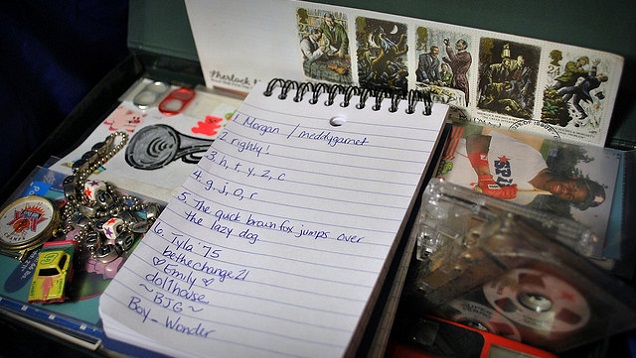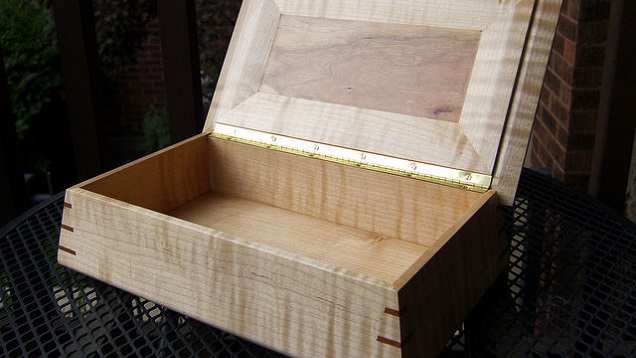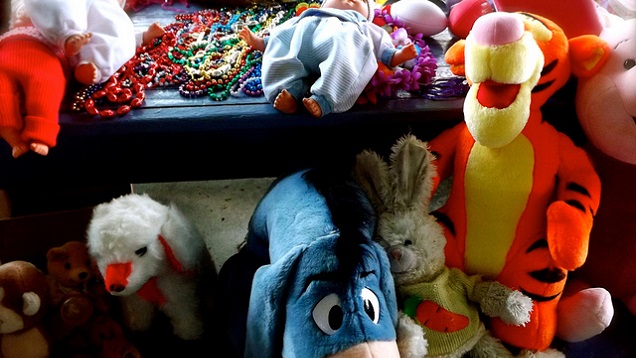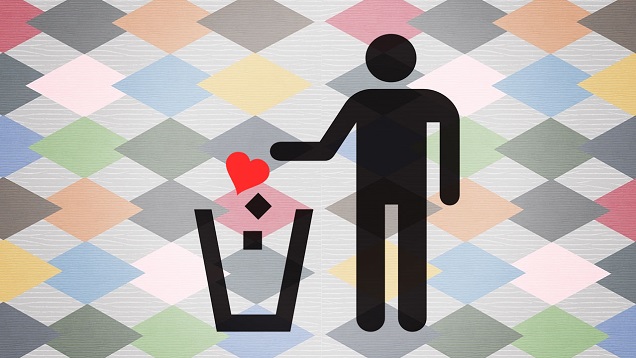When you’re trying to declutter your home, sentimental items pose a difficult challenge. They take up valuable space, but you feel guilty when you even think about getting rid of them. Here are a few tips to help you go through your keepsakes without feeling like a heartless monster.
Pictures: OpenIcons, Zipnon, Keoni Cabral, Kevin Couette, Morgan, David B. Gleason, Laura Bernhardt.
Remember That You Are Not Made of Your “Stuff”

As you start to get rid of your things, constantly remind yourself that you are not comprised of your belongings. Even if you get rid of all your things, you’re still you. This is harder to do with sentimental items because it seems like memories are attached to them, but Joshua Fields Millburn at The Minimalists explains that those memories are actually within you, not within your things. Keep that in mind as you go through your belongings and ask yourself, “do I need this in order to keep the memory?”
There are plenty of other ways to keep the memories without keeping the item. Take a photo of it, write it down in a journal, or perhaps even decide that it’s a memory you don’t need to keep anymore. In fact, if you’re holding on to an item for a memory that weighs on you, it’s probably time to say goodbye.
Write a Story About Your Favourite Items

For items that do have exceptional memories or sentiment behind them, you can write a story that expresses everything you feel about it. This helps in a few ways:
- You can transcribe the sentiment into something far more personal and compact.
- You force yourself to realise what was so important about the item to begin with.
- You can translate that importance into your life right now.
As you write your story, Courtney Carver at Becoming Minimalist suggests you might find that the feelings the item evokes goes far beyond just a memory:
…most sentimental things aren’t things at all, but stories of the people and places we love, and how we spend our time… Your words may start out describing your mother’s watch, but turn into a beautiful story about an afternoon the two of you spent together… Not only do you make room for the good stuff, but you can clearly identify what is most meaningful to you. Instead of filling boxes with the things that define your life, spend more time creating your life…
That story about your mother’s watch might prompt you to spend more time with her. Or it might make you realise that you want to give your kids as many memories like that as you can. Look beyond the memory and see what really makes that item important to you so you can let it go.
Keep Just One Thing Per Memory or Person

If you have a lot of keepsakes, chances are there are plenty items that double up on memories and people. If you have two things that commemorate a baseball game you went to, pick your favourite and keep it. If you have a box full of memories from a friend or old flame, find something that provides the best memory and keep that. You don’t need that much stuff to remember someone. You might even remember that you don’t want to remember them, and it’s time for them to go.
If it’s somebody very dear to you that you’ve lost, dedicate an entire journal to them and write out every memory you can with each item. Add photos and small, flat things where you can and you’ll see that you never really needed all that stuff to begin with.
Designate a Reasonably Sized Keepsake Box

It’s ok to keep a few things, especially if they’re things you’ve already narrowed down. You still don’t want it taking up too much space though. Find a box that’s roomy enough to fit a few things inside, but also small enough that it can hide away in a closet out of view. If all of your sentimental items can’t fit in that box, go through them again until they can. Eventually you’ll have an efficient storage solution for all your memories that can be easily accessed when you want to go back.
Give Your Keepsakes to Those Who Can Use Them

Something that’s sentimental to you is probably still useful to someone else. As you go through your things, knowing that someone else might be able to make new memories with an item can help you move on. You might love seeing your old toys every once in a while, but there’s probably a kid in need that would love to play with them. Clothing, sports equipment, tools and anything that isn’t broken or overly personal — like photos — can be donated. You’ll feel good getting the weight off your shoulders and feel good knowing you helped someone.
Of course, there’s no need to rush through any of this. Digging through old memories can be painful and emotionally exhausting. Courtney Carver at Be More With Less emphasises that it’s important to take your time going through your stuff. As you go, ask yourself questions that can make it easier on you, and if you come across an item you’ve kept out of guilt, give it to someone else who can use it. It’s not doing any good sitting there doing nothing. It’s a big step to start getting rid of sentimental items, but it will help declutter your house and your mind.

Comments
2 responses to “The Guilt-Free Guide To Parting Ways With Your Sentimental Items”
So basically Toy Story 3
That notebook looks like its filled with passwords.